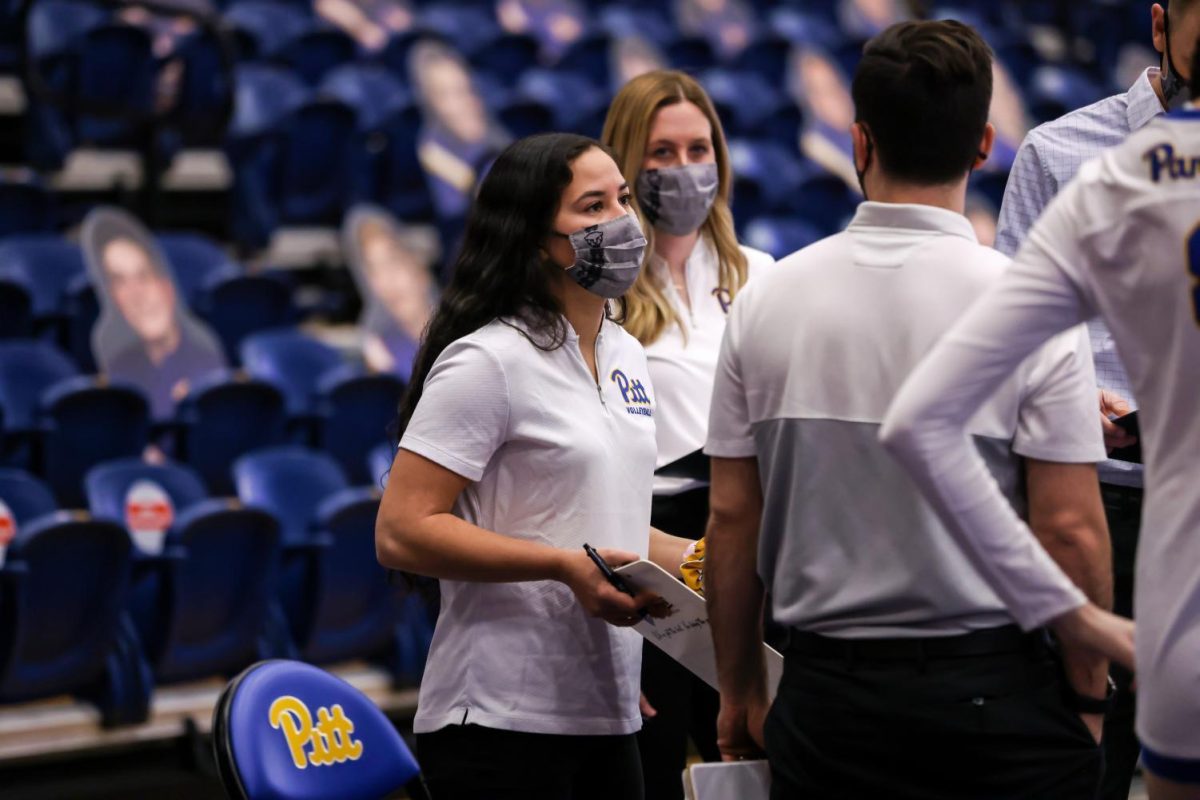Deep underground, in the basement of the Cathedral of Learning, a Lithuanian string instrument has been silent in storage for more than 80 years.
Larger than a violin but slightly smaller than a guitar, the kanklès has 12 strings, including a broken one that swings out from the instrument. Pitt received the instrument, which has five stylized flower designs carved into its wooden face, sometime in the late ’30s.
Now, the kanklès, with its top carved in the shape of a wave — along with dolls, books, newspaper clippings, handkerchiefs, sculptures and about 1,000 other items donated to Pitt’s Nationality Rooms program over the years — will soon see the virtual light of day.
Michael Walter, Nationality Rooms tour coordinator, is creating an online gallery of donated items that are too fragile to display in the rooms. When the gallery goes live, visitors can search for items by the ethnicity of a nationality room or the type of object, such as textiles or dolls.
“If they were just moldering away, it does no one any good,” Walter said.
Walter aims to have the online gallery on the Nationality Rooms website by April, even if not all of the items are inventoried or photographed by then.
“For the time being, a virtual gallery is a way to get some of this stuff out,” Walter said.
The Nationality Rooms program receives donations from a wide array of sources, such as collectors, professors and people who inherited cultural objects from relatives.
Each item on the online gallery has its own story. The kanklès spent decades in storage because it could not be bolted down or displayed in a case in the Lithuanian room because of space constraints.
Similarly, in 2003, the Nationality Rooms program removed a Czechoslovakian medal from the Czechoslovak Room which was from the 1939 World’s Fair and was created to gain support for freeing Czechoslovakia from Nazi occupation. Although none of the items in the archive are for sale, copies of the coin sell on eBay for between $20 and $90.
“These are descendants of the culture, and they’ve given objects left by parents and grandparents to the University to display,” Maxine Bruhns, director of the Nationality Rooms program, said. “These are personal things.”
A Serbian manuscript of the gospels of Prince Miroslav remained in storage because it was too large for the Yugoslavian room’s display case.
“It lends perspective to the culture that’s depicted in the rooms,” Bruhns said, on the importance of donated items to the Nationality Rooms.
At Pitt, Ruth Crawford Mitchell started the Nationality Rooms program during the construction of the Cathedral of Learning at the request of Pitt’s 10th chancellor, John G. Bowman. As the first director of the program, Mitchell contacted ethnic communities within Pittsburgh to create nationality classrooms as a way to share their heritage.
Over the years, as the Nationality Rooms program has evolved, the donated items have accumulated.
Bruhns and Walter began the online gallery project last spring, as they found themselves running out of storage space and wanting to take inventory. The last time someone inventoried the items was 1995.
Because the people who conducted the 1995 inventory made some of the labels incorrectly, Walter and the student assistants sometimes struggle for a long time to identify and research an item.
“Some of the stuff was easy to identify, others not,” said Max Adzema, a Nationality Rooms tour guide who graduated from Pitt this past December. Currently, Adzema said, he and a few students have been working for several days to identify a watch.
Adzema became involved in the project this past summer after asking Walter what he could do to help with the Nationality Rooms program.
“I want [students] to help because it’s an opportunity for some really great pre-career training,” Walter said.
For Mariah Flanagan, a junior who helped with the project, the experience primed her for her desired future career as a museum professional.
“I learned a lot from this process, specifically in how to handle and store collected objects, ethics in collection processes and database organization,” Flanagan, an anthropology and museum studies major, said in an email.
Regardless of whether or not the items are virtually or physically displayed, sharing them with the community remains important for the Nationality Rooms program.
“The Nationality Rooms and the Cathedral have been constants in the lives and stories of Pitt students for almost 70 years and will be for who knows how many more,” Flanagan said. “As members of the Pittsburgh community, it’s important to cherish in and learn about the city’s history and the people that made it what it is today.”
Walter said he and the others in the Nationality Rooms program hope to find a space to permanently display more of the items in storage in the distant future.
“It’s a living program,” Walter said. “It’s still generating something. It’s not like a set piece locked in glass.”


